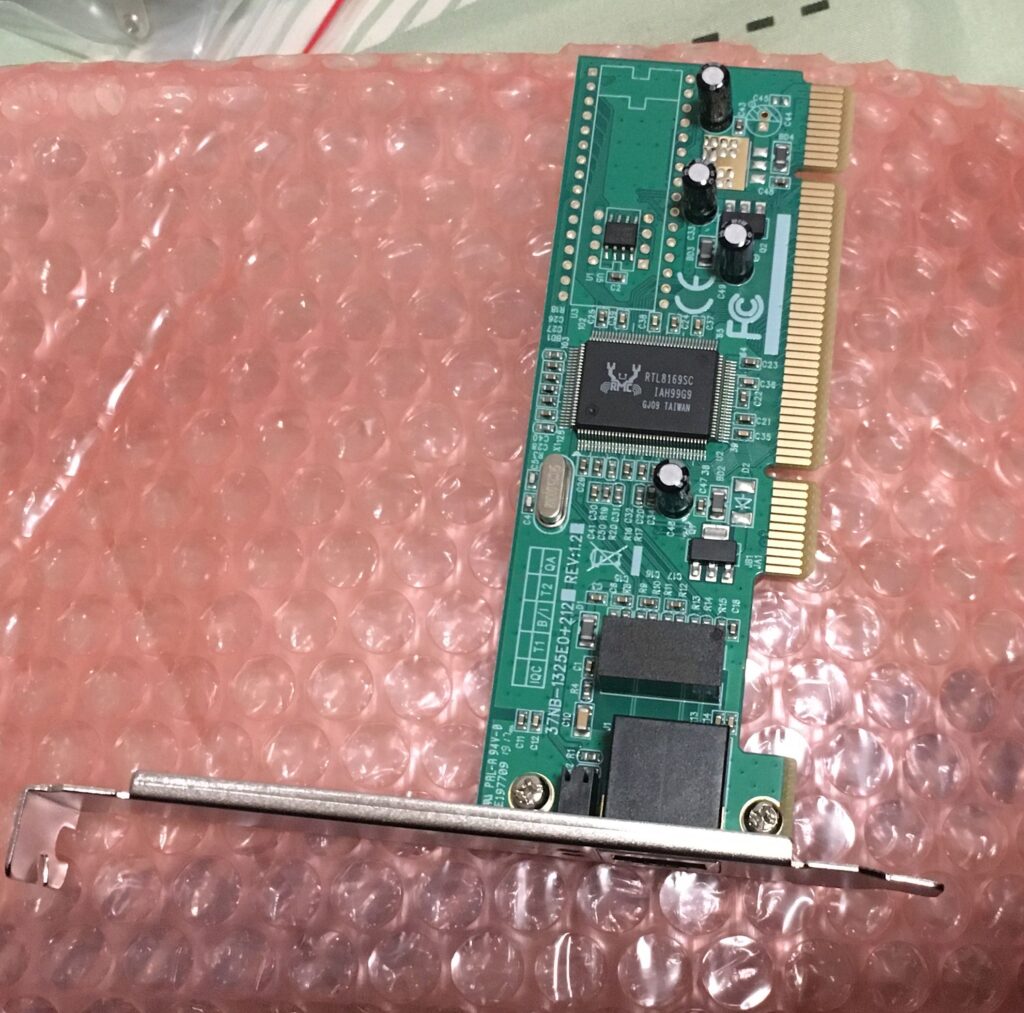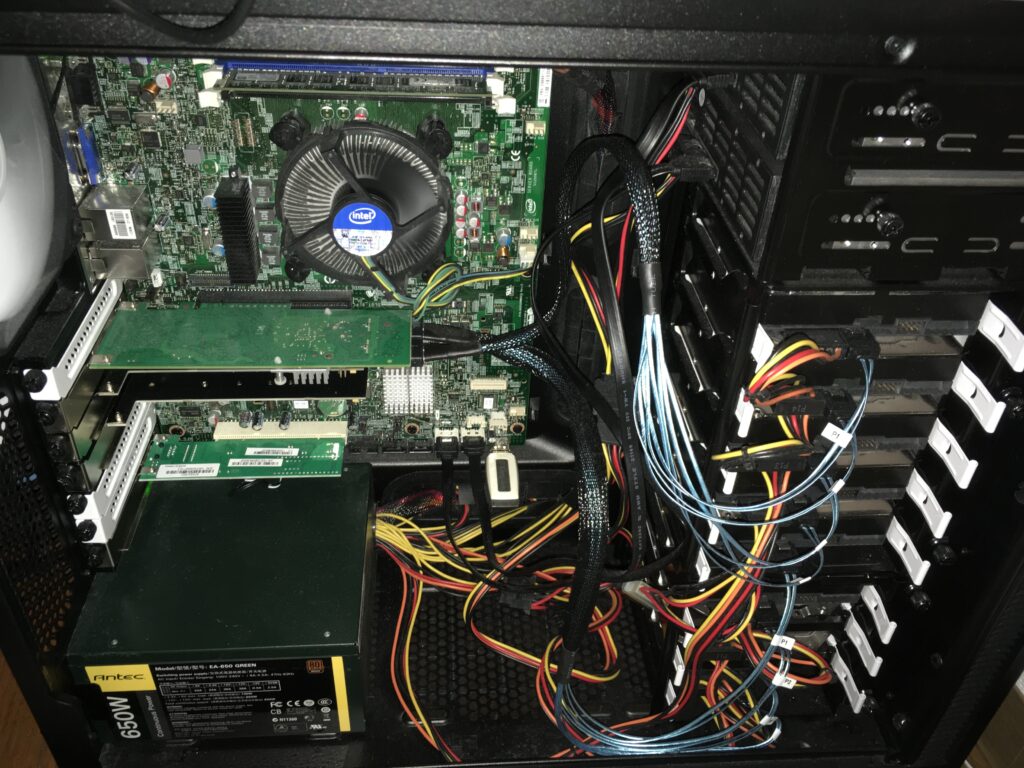I got a new PCI (not PCI-e) gigabit ethernet card. It’s still Realtek.
Sometime last weekend, I had random idea of upgrading to 10 GbE. After looking around, it looks like the whole set is still pretty expensive and when including the switch, it gets even more expensive.
I then kind of shelved that idea.
A bit later, I noticed the download speed from my server is a bit slow at 60 MB/s. Apparently Realtek own driver for Windows performs better than the one provided by Microsoft and that helped… a bit. After the update I got something like 800 Mbps down and 600 Mbps up from iperf. That’s still a bit slow.
I switched my server ethernet to use a spare onboard Intel NIC (82574L). Theoretically it should be faster. And it sure is faster. If only it doesn’t crash at random which is why I’m not using it.
The solution then would be to replace the Realtek card.
While I’ve shelved the 10 GbE, I still want it sometime later this year. Bridging 10 GbE and 1 GbE seems like a good idea but my motherboard doesn’t have any more PCI-e slots. Then I realized it’s got an extra PCI slot. What can go wrong? =)
Now if only Intel ethernet market isn’t filled with counterfeits. In the end, my choices were either Realtek or Realtek. I went with Realtek.
The card arrived today, and as expected, it performs just as bad as the PCI-e card, if not worse at 640 Mbps up and 500 Mbps down. That sucked. It’s kind of expected though. And thankfully the card itself was cheap.
Faced with either crap PCI-e Realtek or crappier PCI Realtek, I remembered the other onboard Intel ethernet seems to be working fine so far. It’s an 82579LM chip. Quick DuckDuckGo indicates it’s better than the other chip. With my internet connection can’t even reach fast ethernet, I figured I can just use the onboard port for intranet and the shiny, slow PCI card for internet.
Few config edits later, I got everything set up and running. iperf now reports happy 900 Mbps both ways and of course my internet is still at its maximum speed of 50 Mbps (thanks crap apartment cabling).
All that’s left is seeing if this onboard port is usable on actual heavy load.
And buying two good 10 GbE cards. I’m thinking of this cheap Aquantia card which seems to be used everywhere. The main problem is there’s no built-in driver for it in FreeBSD. There’s one seemingly working driver available so I hope it’ll be integrated and work out of box sometime later this year. Or this Tehuti card I just discovered when writing this post. It’s even cheaper. And the driver situation is similar to Aquantia though for this one it’s currently being reviewed. Hmmmm. Maybe next month.
I should also check the PCI-e Realtek card under Windows to see if it performs better.
After all this crap, I then remembered I have a space USB Ethernet dongle. It’s not even close to gigabit but it’s plenty fast for my internet. That said, using USB dongle is kind of clunky and I never really liked it when I used it years ago.
And I just like installing things to PCI/PCI-e/AGP/ISA/etc slots. IRQ conflicts etc notwithstanding.

